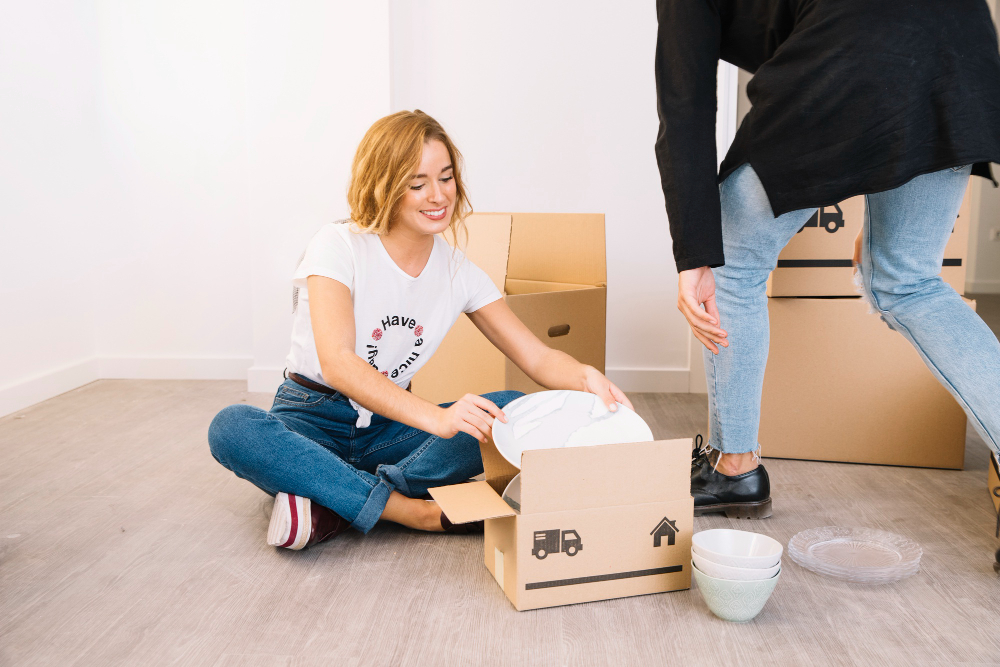Moving can be a daunting task, and packing up your kitchen can be especially challenging due to the numerous fragile and oddly shaped items it contains. Properly packing your kitchen items is crucial to ensure they arrive at your new home in one piece. Follow this comprehensive guide to learn the best way to pack your kitchen for a smooth and stress-free move.
1. Gather Packing Supplies:
- Sturdy boxes in various sizes
- Packing paper
- Bubble wrap
- Packing tape
- Dish dividers or cardboard inserts
- Ziplock bags
- Permanent markers
- Packing peanuts (optional)
2. Declutter and Organize: Before you start packing, go through your kitchen items and declutter. Donate, sell, or discard any items you no longer need or use. This step will save you time and effort during both packing and unpacking.
3. Pack Non-Essentials First: Begin by packing kitchen items you won’t need before your move. These may include:
- Rarely used appliances
- Specialized cookware
- Seasonal dishes
- Decorative items
4. Prepare Your Appliances:
- Defrost your refrigerator and freezer at least 24 hours before your move.
- Clean appliances thoroughly, removing any food residues or crumbs.
- Secure any loose or fragile parts with tape or zip ties.
- If possible, pack small appliances in their original boxes. Otherwise, wrap them in bubble wrap and place them in sturdy boxes.
5. Pack Dishes and Glassware:
- Start by placing crumpled packing paper or bubble wrap at the bottom of your boxes for cushioning.
- Wrap each plate, bowl, and glass individually with packing paper. For added protection, wrap fragile items with bubble wrap as well.
- Place dishes on their edges in the box, rather than stacking them flat. This reduces the risk of breakage.
- Fill any gaps in the box with crumpled paper or bubble wrap to prevent items from shifting during transit.
- Clearly label the box as “Fragile” and “Kitchen – Dishes and Glassware.”
6. Safely Pack Cookware and Bakeware:
- Stack pots and pans, placing a layer of packing paper or cardboard between each to prevent scratching.
- Use Ziplock bags for small kitchen tools like measuring spoons and utensils. Tape the bags to the inside of cabinet doors to keep them organized.
- For delicate items like casserole dishes, wrap them in bubble wrap and pack them in sturdy boxes with plenty of cushioning.
7. Protect Your Small Appliances:
- Wrap small appliances like blenders, toasters, and coffee makers in packing paper or bubble wrap.
- Place them in boxes with ample padding and fill any empty spaces with crumpled paper.
- Label each box with the name of the appliance it contains.
8. Pack Your Fragile Items Carefully:
- Wrap fragile items like stemware, vases, and delicate decor with several layers of packing paper or bubble wrap.
- Use dish dividers or cardboard inserts for wine glasses and other delicate stemware.
- Place these items in small boxes, ideally with foam or bubble wrap at the bottom.
- Clearly mark the boxes as “Fragile” and “Kitchen – Fragile Items.”
9. Secure Your Knives and Cutlery:
- For safety reasons, wrap your knives individually in cardboard or bubble wrap.
- You can use a knife block or a special knife roll to keep them protected and organized.
- If you don’t have these, create a secure bundle using cardboard and packing tape. Label it as “Sharp Objects” to alert handlers.
10. Handle Your Spices and Pantry Items: – Sort through your pantry and discard any expired or unwanted items. – Place unopened, non-perishable pantry items in boxes, ensuring they are sealed tightly. – Use Ziplock bags or airtight containers for open spices and seasonings to prevent spills. – Clearly label the boxes with their contents and mark them as “Kitchen – Pantry Items.”
11. Organize Your Utensils: – To prevent utensils from tangling, separate them into categories and wrap each category with rubber bands or tie them together with string. – Place them in Ziplock bags or utensil organizers. – Label the bags or organizers with the type of utensils they contain.
12. Pack Your Non-Food Essentials: – Items such as dish soap, cleaning supplies, and kitchen linens can be packed separately in a clearly labeled box. – Ensure that any liquids are sealed tightly to prevent leaks during transit.


